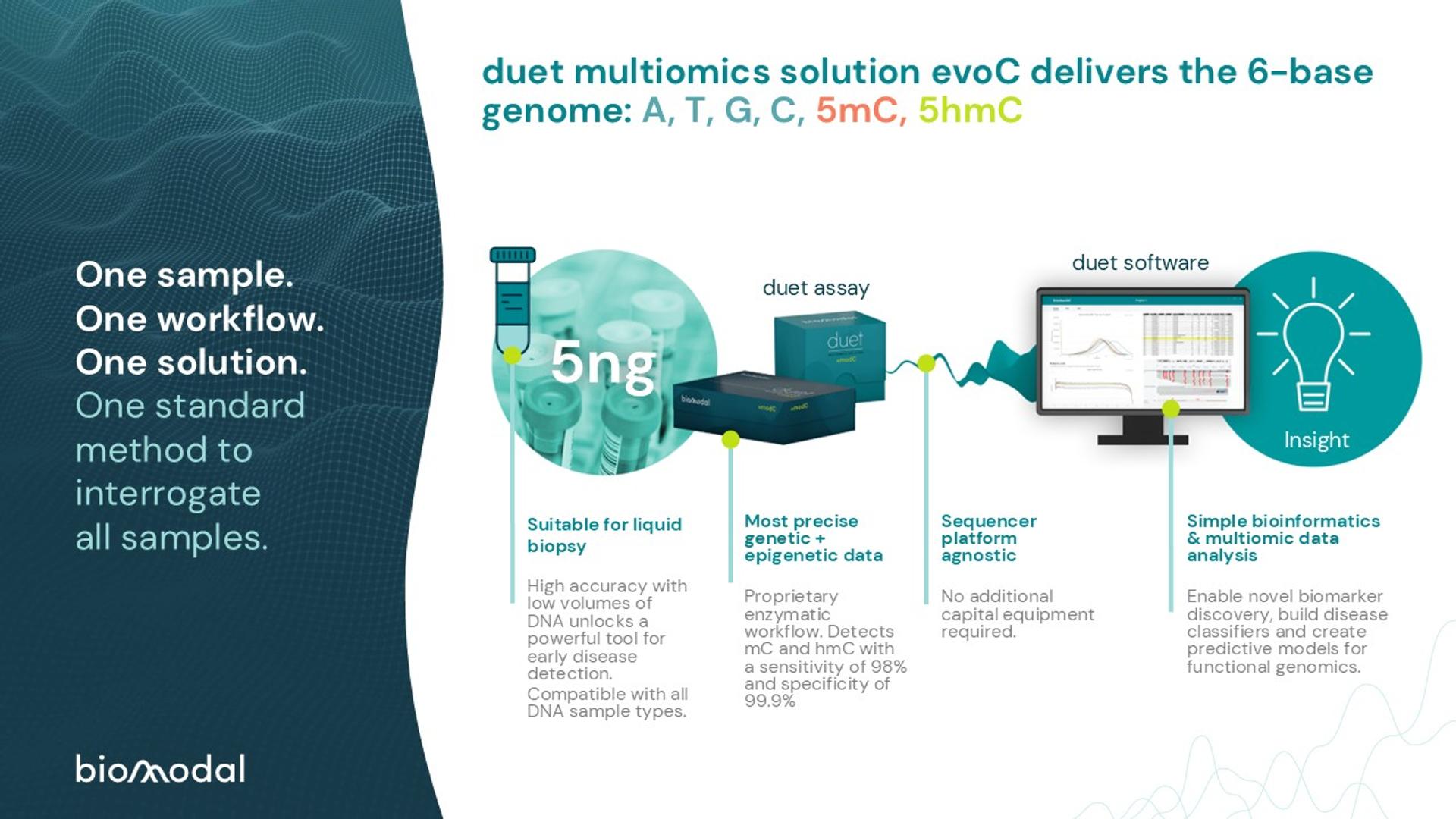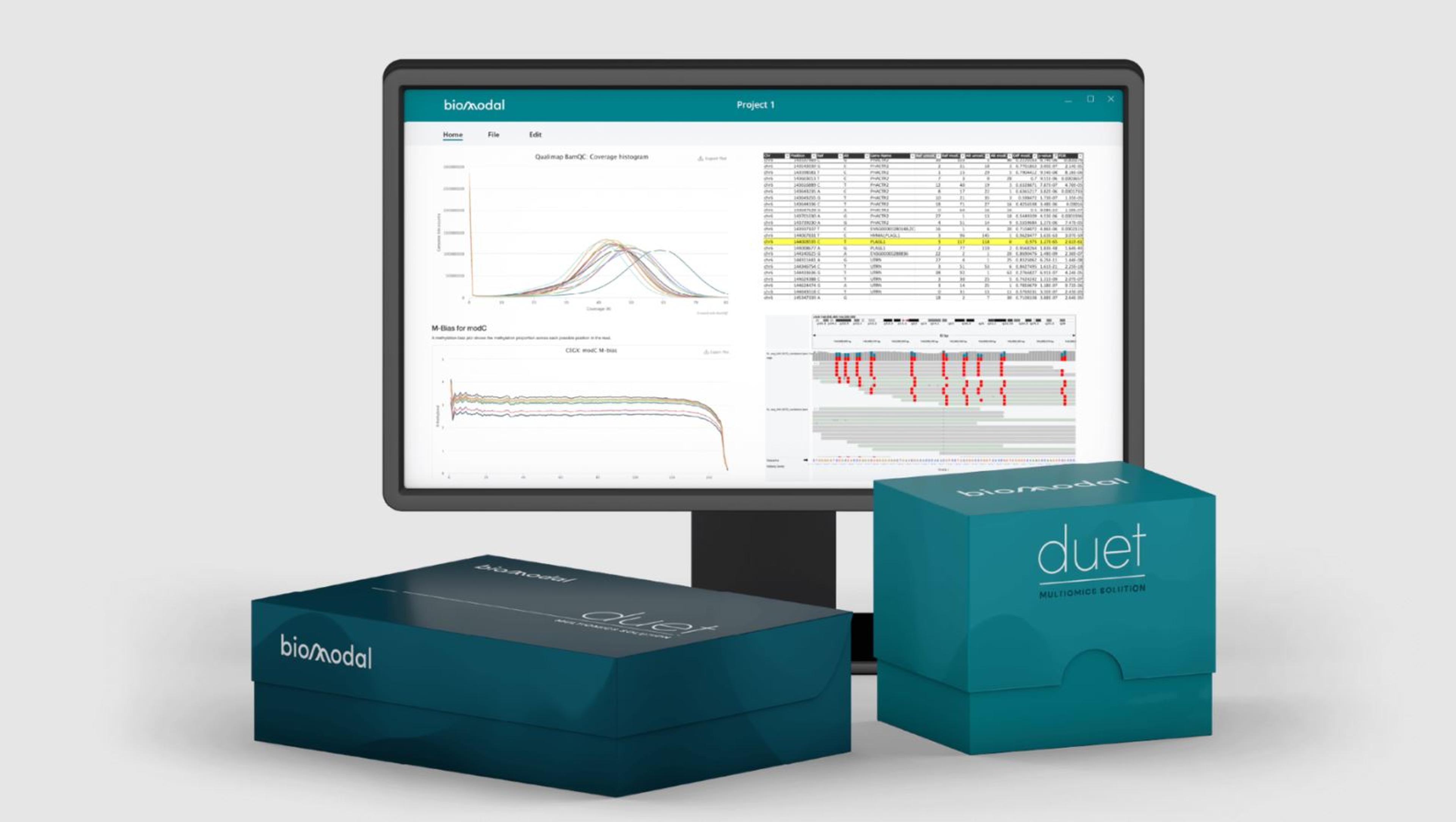The 6-base genome revolution
Dr. Chia-Lin Wei, Professor of Genome Sciences at University of Washington, shares how to unlock DNA methylation insights for neuroscience and cancer research
8 Apr 2025
The ability to fully decode the human genome has revolutionized our understanding of genetics, but it misses the epigenetic information that is dynamically encoded in DNA, the epigenome.
DNA methylation – the addition of a methyl group to the 5th carbon of cytosine residues in DNA – is crucial for normal cellular processes such as development, aging, and genomic stability, playing a key role in regulating gene expression and maintaining cellular identity. There are two types of DNA methylation, with distinct roles in gene regulation: 5-methylcytosine (5mC) down-regulates gene expression and 5-hydroxymethylcytosine (5hmC) upregulates gene expression. 5hmC is a modified version of 5mC, where TET (ten-eleven translocation) proteins convert 5mC to 5hmC, and is often considered to be an intermediary state in the demethlyation process. However, new research, including work by Dr. Chia-Lin Wei, Professor of Genome Sciences at the University of Washington, has revealed that it is not just an intermediate, but an important regulatory marker.
A 6-base genome approach to deeper insights
The 6-base genome approach, goes beyond the analysis of the four canonical DNA bases (G, A, T, C) to include 5mC and 5hmC. This provides a more comprehensive analysis of the genome to reveal crucial details around gene regulation. Importantly, this approach helps researchers understand epigenetic plasticity: how cells adapt and change gene expression in response to environmental factors or diseases. By better understanding 5mC and 5hmC, researchers can see how these changes can contribute to pathological conditions such as cancer or neurodegeneration.
duet multiomics solution evoC (duet evoC) from biomodal leverages this 6-base genome concept, simultaneously analyzing both genetic sequences and epigenetic modifications (5mC and 5hmC) from a single sample. This multiomic solution provides a holistic view of cellular functions, making it more time-efficient when compared with traditional multi-step analyses. It also improves research efficiency with an assay turnaround time of less than 18 hours and hands-on time of less than 10 hours.

Conventional methods often require splitting the sample and running parallel workflows, with multiple data analyses and significant information loss. duet evoC is designed to provide a single, comprehensive workflow to efficiently obtain genetic and methylation information simultaneously using your existing NGS pipeline.
New approaches for neuroscience and cancer research

Dr. Chia-Lin Wei, Professor of Genome Sciences, University of Washington
Dr. Chia-Lin Wei, Professor of Genome Sciences at the University of Washington, is one such scientist using this innovative technology to unlock the mysteries of gene regulation and its applications in neuroscience and cancer research.
“We completed an initial study using bisulfite and oxy-bisulfite sequencing using a set of bladder tumor and non-Hodgkinson lymphoma samples, which demonstrated the unique functionality of 5hmC,” Dr. Wei explains of her pilot study. “When I learned about duet evoC and its ability to detect 5hmC, 5mC, and genetic variations at the same time, as well as the ability to work with small amounts of samples, the immediate thought was that can be really useful to study cell-free DNA.”
Having established that duet evoC was a technology of interest, Dr. Wei and her lab set out to establish how well the technique worked and corroborate the data obtained from their earlier studies in other tumor types. “Our lab has a collection of cell-free DNA from cohorts of colorectal cancer of different stages,” continues Dr. Wei. “So, as a pilot study, we ran a set of samples from different stages (from stage I and IV) with the hope that that we can detect 5mC and 5hmC as well as the common genetic variance of known oncogene mutations associated with colorectal cancer, which has already been well-established.”
This study on colorectal cancer found that 5hmC signatures increased with tumor progression, particularly in regulatory elements. This suggests that 5hmC could be an important biomarker for early detection and prognosis in cancer.
Dr. Wei and her team are delighted with the results so far from duet evoC, highlighting three key take-home lessons from this pilot study. “We have established that the distributions of 5mC and 5hmC, are very comparable to our oxy-bisulfite and bisulfite data,” shares Dr. Wei. “Second, 5hmC has been selectively enriched in the so-called regulatory elements, open chromatin, and that's something very reassuring to see. Thirdly, we have seen that between stage I and stage IV, we see elevations of 5hmC signatures associated with this tumor progression, which is consistent with the literature.”
These insights can also be applied more broadly than cancer, particularly in neurobiology. 5hmC is found in particularly high levels in the brain and is thought to play a key role in neuronal development and synaptic plasticity. It has been identified as a potential biomarker for glioblastoma and is also opening up opportunities for future studies in other neurological conditions such as Alzheimer’s Disease.
The future of 6-base genomics
duet evoC provides a unique opportunity to integrate genetic and epigenetic analysis into a single, streamlined workflow. With the integration of genetic and epigenetic data this solution will continue to expand our understanding of complex diseases. The use of 6-base sequencing looks likely to aid in the discovery of novel biomarkers and therapies for both cancer and neurodegenerative diseases.
"The next step is to expand this research to larger cohorts and different types of cancers, like glioblastoma. We hope to develop diagnostic and prognostic biomarkers that will help clinicians treat these diseases earlier and more effectively," Dr. Wei shares. “In the future, the ability to capture both genetic and epigenetic data from a single sample will drive precision medicine forward, particularly in fields like oncology and neurodegenerative diseases."
While still a relatively new approach, the potential benefits are clear, and Dr. Wei encourages her peers to explore this powerful solution. "This technology allows you to do more with less. It reduces costs and sample requirements while providing a wealth of data. For researchers in clinical genomics, it’s a must-try. Although the field is still catching up to 5hmC, solutions like duet evoC are making it easier for researchers to study this critical modification and its role in disease," Dr. Wei concludes.

